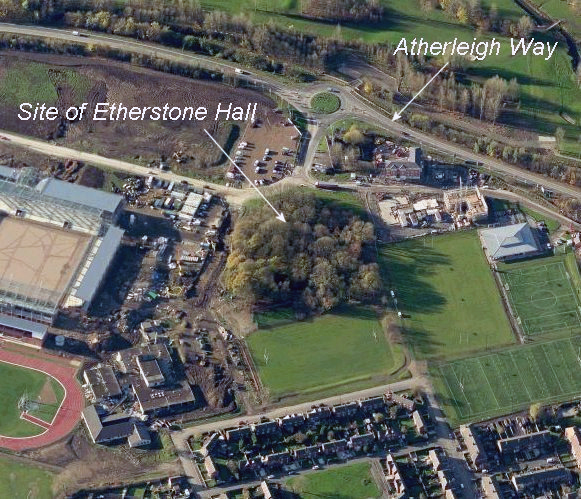
Between 2006 and 2008 a series of community excavations were undertaken in Manchester under the title of Dig Manchester. Sites included in the project were at Moston Hall, Northenden Mill and Wythenshawe Park. They involved a unique collaboration between the City Council, University, Heritage Lottery Fund, sponsors and local communities. One of the goals of the project was to get children from inner city areas to aspire to higher education at the University of Manchester. But it was also very successful in encouraging both young and old to get involved and learn more about their local heritage.
Now the Greater Manchester Archaeology Unit (GMAU) is expanding the project to include every authority across the county. And so Dig Greater Manchester is coming to the Wigan Borough. Fortunately for us, we have been selected as the lead borough and over the past year or so, plans have been put in place to select a suitable site. Possible sites looked at have included Haigh Hall and Hawkley Hall, but the site eventually chosen is Etherstone Hall near the new Sports Village in Leigh. This site dates from the early 15th century and is thought to have originally been a Medieval hall surrounded by a moat (map evidence suggests the moat was a sub-rectangular enclosure flanked by two linear ponds).
A 'new' hall was built in 1826, the farmstead greatly enlarged and the grounds radically altered. This hall was demolished in 1908 and the rest of the farmstead between 1972 and 1985. In 2006 the University of Manchester Archaeology Unit (UMAU) were commissioned to undertake an archaeological evaluation of the site in advance of the proposed Sports Village complex. Four trenches were dug and evidence for the 1826 construction was uncovered. Significantly, however, they also indentified a large cut feature which proved to be Medieval in date as well as industrial activity dating to the early post Medieval period. There seems, therefore, to be a lot of potential archaeology on this site.
The Dig Greater Manchester Project will be a partnership between the GMAU, which is the office of Norman Redhead, the County Archaeologist; the Centre for Applied Archaeology of the University of Salford, which replaced the UMAU (a victim of the recent financial cutbacks); the ten metropolitan boroughs of Greater Manchester and the local archaeological societies. Funding for the project will come from the Association of Greater Manchester Authorities (AGMA) and applications will be made to the Heritage Lottery Fund (HLF). Wigan Borough Council are keen supporters of the project and the Wigan Archaeological Society's involvement will be quite significant. Meetings with the Council have already taken place and, if plans go ahead, it will provide a great opportunity for us to work along side the professionals on what could prove to be a very interesting site.
Summer Trip
This year we are looking to visit the Roman site of Wroxeter, near Shrewsbury. It will include the newly built Roman town house which appeared on the Channel 4's 'Rome Wasn't Built in a Day' programme. We will also be visiting another site, which has yet to be decided (Coalbrokdale Museum of Iron has been suggested). The date for the trip has not been finalised but is likely to be Sunday 14th August. To keep the cost down, we will probably travel, as we did last year, in cars. If you are interested in coming along please let me know at our next meeting.
Next Meeting
Wednesday 4th May in the Concert Room of the Upper Morris Street Working Men's Club (off Greenough Street), starting at 7.30 pm as usual. This month Dr Rachel Newman from Oxford Archaeology North will be giving us a talk on her recent work on Roman Carlisle. Excavations in the town were completed last year after a 10 year programme (Rachel's project report is just about ready for publication). Carlisle was a very important Roman town dating from the earliest period of the Roman occupation of the North (72/73AD). Much or the evidence for the Roman occupation comes from this period and includes wooden tent pegs similar to those found in Wigan. This showed that the troupes initially lived in tents before a more permanent wooden fort could be built. Other finds include a rare neck guard, leather shoes and a saddle which indicates that the garrison was probably a cavalry unit (it certainly promises to be a very interesting talk).
Hope to see you there. - BA
|



